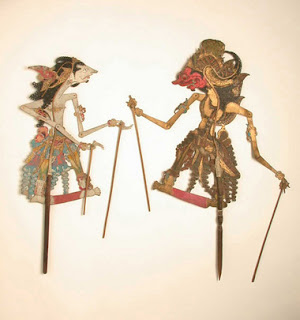PUPPET
- žHave intrinsic value.
- žAllows us to compare past and present conditions.
- žHelp us make connection to the real world.
- žDevelops students creativity.
- žCan be viewed, handled and examined by student.
- žAdds interest.
- žDemands a bigger space in the classroom in terms of use and storage.
- žIs generally expensive.
- žCan be easily damage.
This is artificial figures whose movements are controlled by a person.
ž
They are inanimate objects that are manipulated so as to appear to be moving .
ž
The person who operates them called Puppeteer.
žIt moves by hand or by strings, wires, or rods.
ž
Puppets figures are made to represent a person, animals, plants and objects.
- 1.Shadow Puppets
- Rod Puppets
- they are flat cut out
figures tacked t a stick, with one or more movable parts and operated from below the stage level by wire rods or slender sticks.
- Hand Puppets
- Marionettes
- these are generally constructed of woods with articulating joints that replicate those of human beings.
- žThey boost active participating among students.
- žGetting attentions.
- žFascination of the inanimate object.
- žEnjoyable and spontaneous learning experiences.
- žStudents become more creative.
- žTime consuming .
- žIt is expensive.
- žDemands extra efforts.
- žIt can compete with the teacher.
- žPuppets play must be base on action rather than words.
- žAdapt the puppet show in all respects to your audience.
- žKeep the plays short to ensure success.
- žDo not omit the possibilities of music and dancing as part of the puppet show.
žA resource person is someone invited to talk about something. s/he is experienced or knowledgeable with and capable of sharing what s/he knows.
ž
In the classroom, there are instances when a teacher realizes that certain topics are better taught when they are discussed with the help of an expert.
- žEngage the expert.
- žClarify the purposes of the visit.
- žThe subjects is for educational relevance and value to the student in that class.
- žThe speaker/s will not tent to disrupt the educational program.
- žThe information to be discussed Is appropriate to the age and maturity of the student .
1.Thoroughly prepare what you are going to say.
2. follow the TIS formula:
- T- stands for topic or the exact title of the speaker’s talk.
- I- stands for importance of the topic
- S- stands for the speaker. It includes the speaker’s outstanding qualifications, particularly those that relate to the topic.
Announce the speaker’s name distinctly and clearly.
Be enthusiastic about the speaker.
- žCrash thoroughly your shell of self-consciousness.
- žDon’t try imitate other- be your self.
- žConverse with your audience.
- žPut your heart onto your speaking.
- žPractice making your voice strong and feasible.
- žHassle in searching for the suitable speaker.
- žIt might confuse the audience if the speaker is not good enough.
- žLess enthusiasm, from the audience if the speaker is boring.










Walang komento:
Mag-post ng isang Komento